Leica Summicron-M 50 mm f/2.0
3. Build quality
Leica Summicron-M 50 starts with a metal bayonet of classic shape for the M mount. Going further we find depth of field markers. Even higher there’s a convenient and corrugated manual focusing ring, which works with no reservations. You operate it fluidly and with appropriate resistance in the whole scale. On the ring there’s a distance scale expressed in meters and feet. What’s worth noticing is the minimum focusing distance of as much as 0.7 meter. This is typical of rangefinder optics in which the rear lens is very close to the large sensor. Constructions of competitors of 50 mm class designed for DSLRs have the minimum focusing distance of about 0.4 meter.
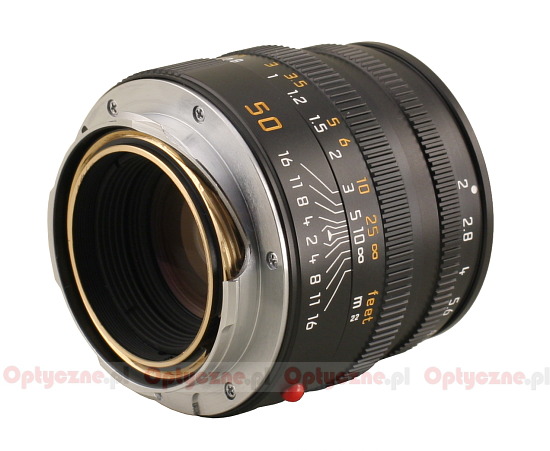 |
Please Support UsIf you enjoy our reviews and articles, and you want us to continue our work please, support our website by donating through PayPal. The funds are going to be used for paying our editorial team, renting servers, and equipping our testing studio; only that way we will be able to continue providing you interesting content for free. |
- - - - - - - - - - - - - - - - - - - - - - - - - - - - - - - - - - - - - - - - - - - - - - - -
Then , there’s an aperture ring. It works in 0.5 EV steps and again it’s hard to blame it for inconvenience. Changing the aperture is fluid and also resistant enough not to let us do it accidentally. The lens ends with a non-rotating filter thread of E39 diameter.
The image of how small the tested Summicron is give the pictures below, in which it’s standing between Leica 2/28 and Nikkor 1.8/50 and then between Nikkor 1.8/50 and Leica 1.4/50.
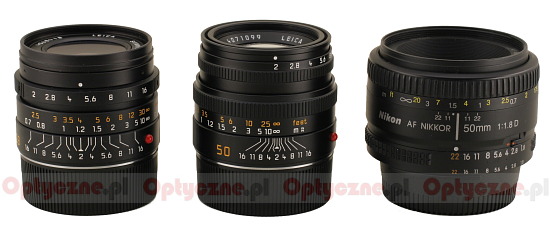 |
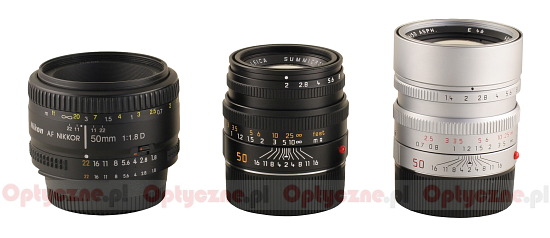 |
As far as the internal construction is concerned, we have 6 lenses set in 4 groups here. It’s not a very complicated instrument, as the old Nikkor S 50 mm f/2.0 and Pentax 43 mm f/1.9 have as many as 7 elements. According to the manufacturers claims, the arrangement of lenses is so well-designed that Leica, while modernizing the lens, didn’t decide to replace the old arrangement of the 70s of 20th century with a construction based on aspherical elements, they only changed the technology of producing the glass and their optical features. Inside Summicron there’s also a circular diaphragm of 8 blades that can be closed down to f/16.
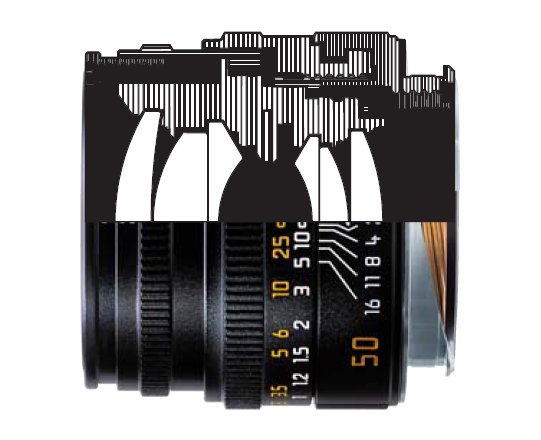 |
A buyer can choose between two versions of the lens, available in black and silver. Furthermore, they get both caps and a solid case of soft leather.
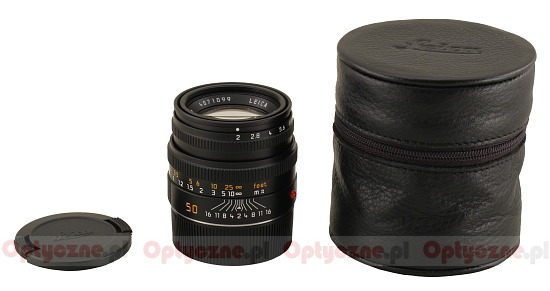 |






